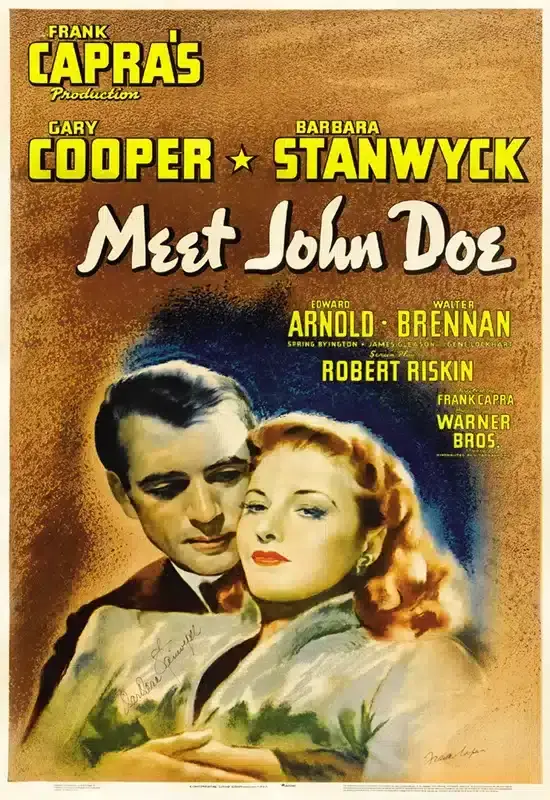Released in 1941, “Meet John Doe” is a classic American film that delves into media manipulation, political corruption, and the power of grassroots movements. Directed by Frank Capra, the movie follows the story of a fictional character named John Doe, who becomes an emblematic symbol of hope during societal unrest. One intriguing aspect of the film is the portrayal of a group called the “Helots,” which significantly shapes the narrative. In this blog post, we will explore the concept of the “Helots” and its significance within the movie.
Understanding the “Helots”:
In “Meet John Doe,” the term “Helots” refers to a group of individuals marginalized and oppressed by the ruling class. The Helots symbolize the common working-class people exploited by the wealthy elite. They are portrayed as the backbone of society, working tirelessly to keep the system running smoothly while receiving little in return.
This is the scene in the movie:
- Beany: What’s a helot?
- The Colonel: You’ve ever been broke, sonny?
- Beany: Sure, mostly often.
- The Colonel: All right. You’re walking along, not a nickel in your jeans, you’re free as the wind, nobody bothers ya. Hundreds of people pass you by in every line of business: shoes, hats, automobiles, radios, everything, and they’re all nice lovable people and they lets you alone, is that right? Then you get a hold of some dough and what happens, all those nice sweet lovable people become helots, a lotta heels. They begin to creep up on ya, trying to sell ya something: they get long claws and they get a stranglehold on ya, and you squirm and you duck and you holler and you try to push them away but you haven’t got the chance. They gots ya. First thing ya know you own things, a car for instance, now your whole life is messed up with alot more stuff: you get license fees and number plates and gas and oil and taxes and insurance and identification cards and letters and bills and flat tires and dents and traffic tickets and motorcycle cops and tickets and courtrooms and lawers and fines and… a million and one other things. What happens? You’re not the free and happy guy you used to be. You need to have money to pay for all those things, so you go after what the other fellas got. There you are, you’re a helot yourself.
Role in the Movie:
The Helots catalyze the film’s plot, highlighting the stark contrast between the privileged few and the struggling masses. They represent the voiceless majority who are often ignored or silenced by those in power. The movie showcases how the Helots, through their collective action, can bring about significant change and challenge the existing social order.
Importance of the “Helots”:
The portrayal of the Helots in “Meet John Doe” emphasizes the need for unity and solidarity among the working class. Their presence underscores the importance of recognizing and addressing social inequality. By highlighting Helots’ struggles, the movie encourages viewers to question the existing power structures and advocate for a fairer society.
Symbolism:
The term “Helots” itself carries historical significance. In ancient Greece, the Helots were a subjugated class of people who worked as serfs for the Spartan society. By drawing on this historical reference, the movie suggests that the exploitation of the working class is not a new phenomenon but a recurring theme throughout history.
Conclusion:
The inclusion of the “Helots” in the movie “Meet John Doe” adds depth and complexity to the narrative, shedding light on the struggles faced by the working class and the importance of collective action. Through their portrayal, the film challenges viewers to reflect on societal inequalities and power dynamics. “Meet John Doe” serves as a reminder that change can be brought about when individuals come together to fight for justice and equality.

